How To: Manage Privacy Settings on iOS
Concerned about privacy? This guide shows you how to manage what apps are using your data, and to limit the data advertisers have about you.
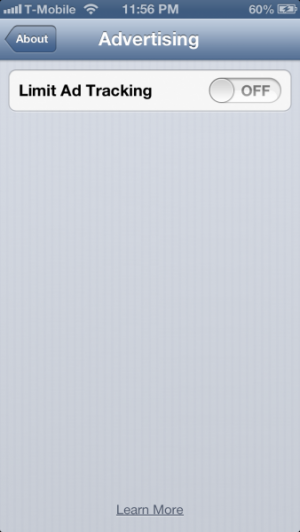
Our phones have become a significant part of our lives, holding large quantities of our personal data on them. Apps that use our data are also a significant part of them, especially given the rise of free apps and services – if you’re not paying, you’re the product – and what these apps have access to is often quite extensive. While Apple’s walled garden does keep many of those with malicious intent away from the App Store, they’re not perfect. There may just be an app that you trust that is doing something with the data you gave it permission for. Here’s how to manage these privacy settings.
The first and most obvious destination is the Privacy section in Settings. Here, you will see sections for various types of data that apps have requested.
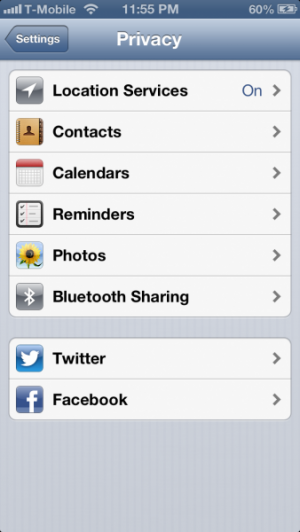
By going to one of these sections, and switching the toggle for that app off, then it will not have access to that data any more. So an app that requests Photos access can have it be restricted. Or, if you initially denied access and wish to grant it, you can now do so from this section.
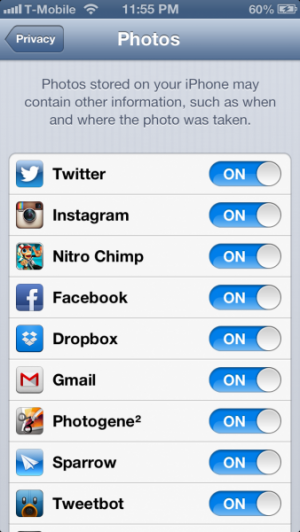
The Location Services section is particularly worth delving into because not only can the icon appear at random times for no apparent reason, but the section to manage it has many wrinkles that the others do not. One, there are variably-colored location icons next to each service, and they may not be apparent to what they mean until you scroll to the bottom, where iOS explains what each icon means.
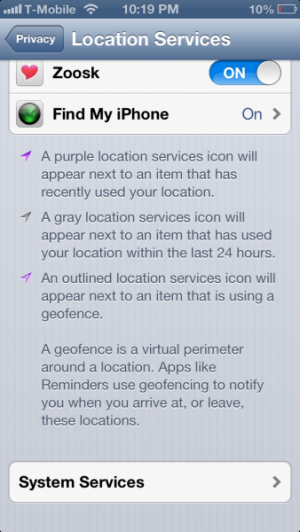
What this means is that you can see on this section which apps are currently requesting your location, not just which apps have access to your location. If an app is continually causing the location services icon to appear in the status bar (and potentially draining your battery), you can see which apps are the culprit here. Often times, apps that use location services can have settings disabled from within the app to have their recurring location check disappear, as having loaction access enabled periodically may be key to your usage of the app. As well, the System Services section shows several system functions that use your location, including one for Location-Based iAds that can modify the types of ads you see.
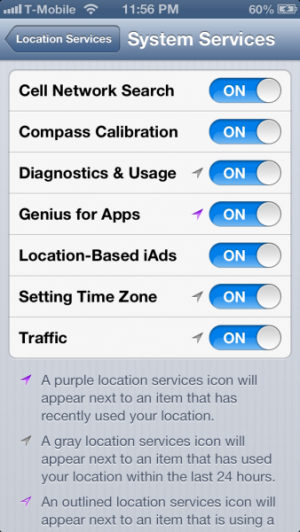
Hopefully these tips have helped you manage your privacy better, and you have a greater understanding of the types of access that iOS apps and system functions have to your data.
Now, there’s one particular advertising-related privacy setting that’s not in Privacy that’s worth considering. Go to Settings→General→About and scroll all the way down to Advertising. Tap on this, and you’ll see a setting for Limit Ad Tracking. By enabling this, then services that identify your device by the Apple Advertising Identifier cannot track you based on this. This means that advertisements will be less targeted to you.
